What's the difference between a Project Post-Mortem and a Retrospective?

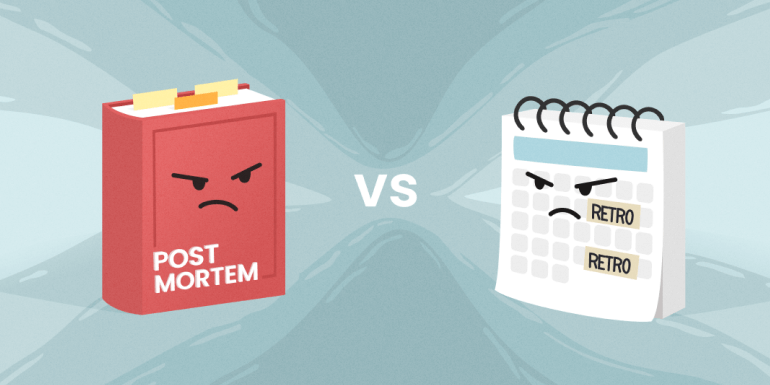
Continuous improvement is a state of mind. And it starts when learning from the past has become a habit.
The end of a project or the resolution of an incident are good times to start improving as a team. By using techniques like retrospectives or post-mortems, you can:
Reflect on past events
Share learnings
Improve your team's processes
Then, by taking action regularly, you will trigger a loop of continuous improvement within your team and become more effective in reaching your goals.
In this article, you will get the answers to the following questions:
What is a team retrospective?
A retrospective is a recurring team meeting designed to help the team improve.
"A retrospective is an opportunity for a team to reflect and learn from the past in a structured meeting. The main objective is to inspect the situation and adapt to reality."
- Aino Vonge Corry, Retrospective Antipatterns
Simply put, the team members discuss what happened during the last project, Sprint, or iteration. Then, they prioritize key aspects on which the team could get better. Finally, the team members shape an action plan to tackle how they can make a difference concretely.
Discussions in a retrospective are based on qualitative data (feedback from team members).
Of course, there are many ways to reflect on the past. The most common way is to ask these three questions:
What went well?
What went not so well?
How could we improve?
But you don't have to repeat these questions at every single meeting!
If you're looking for a neat and straightforward template to start doing retrospectives with your team, check out the Keep Drop Start retrospective template.
And for more information on retrospectives, make sure to read our guide to Agile Retrospectives.
What is a project post-mortem?
A post-mortem is a meeting where the people involved review the success or failure of a project. The goal is to discover ways to implement better processes for your next projects.
This meeting starts by recalling the project's objectives and scope. Then, team members and stakeholders answer different questions asked by a facilitator.
These questions are quite similar to those of a team retrospective, for example:
What worked well?
What went wrong?
Discussions in a post-mortem are based on quantitative data. (costs, metrics, KPIs)
Post-mortems are also called project retrospectives. You can use a retrospective template like What Went Well to host post-mortems with your team.
Post-mortem or Retrospective: which one should I choose?
The first step is to determine the intention behind this meeting: the why.
If a problem has arisen or a project has just ended, a post-mortem will be more suited to understand what happened.
If your goal is to foster continuous team improvement, then do a team retrospective.
Next, ask yourself what you want to get out of this meeting.
If you want to have a report of what happened during the last project, do a post-mortem. The discussions of a post-mortem are mainly based on a quantitative aspect, making the creation of a report easier.
The retrospective is more suitable if you want an action plan on what the team could improve in the way they work. By sharing their feedback, team members will decide by themselves what’s important and how to improve. The outcome of a retrospective is a to-do list called the action plan.
Finally, who is requesting this meeting and who is going to attend?
Post-mortems are often requested when the management needs a report about a situation. Such a report aims to communicate clear status to stakeholders or other managers. You can consider that everything happening during a project post-mortem will be made public within the company.
A retrospective is made by the team and for the team. The manager does not have to be present. The ideas expressed during the retrospective do not have to be shared with anyone outside the team. But you can share the action plan.
Retrospective or Post-Mortem, the name may differ, but the intention remains the same: learn from the past to improve in the future.
How do I do a project retrospective with my team?
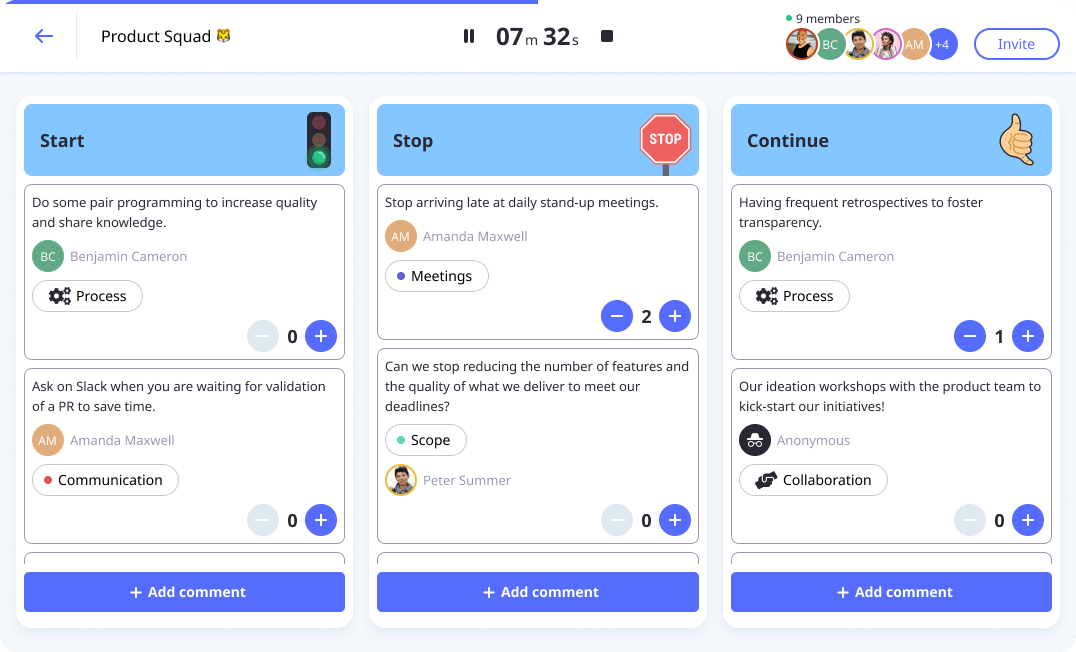
Prepare for the meeting
Preparing for the meeting involves selecting a retrospective model. For a first retro, I advise you to keep it simple.
A simple model like Start Stop Continue will be perfect to start with.
In this template, three questions will be asked to the team members:
What should the team start doing?
What should the team stop doing?
What should the team keep doing?
Break the ice

In a retrospective, creating a climate of psychological safety is essential. Your team members need to trust each other in order to share and be vulnerable.
The team must also feel connected. A simple and fun way to do this is to use an Icebreaker.
Ask an Icebreaker question to each member of your team as an introduction. Let the person respond, then ask some questions and encourage others to jump into the conversation.
This will help you start the retrospective with a relaxed tone.
Our retrospective tool Neatro allows your team to start a retrospective with the Question Game. Discover over 200 Icebreaker questions to break the ice and strengthen the bonds between your team members.
Collect ideas
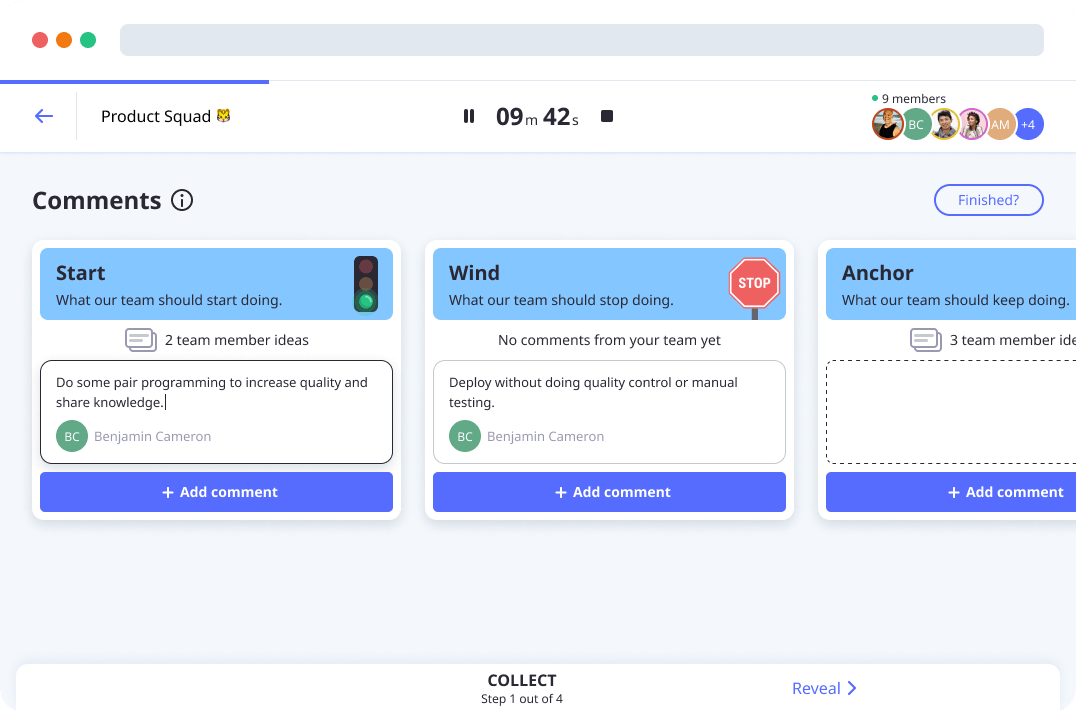
Your team is now ready to start the retro. In this first step, your team members post their ideas, comments, or remarks in each section of the retrospective template.
It is crucial to avoid groupthink. People should not influence each other by reading the comments of others.
Wanna hear the good news? Neatro automatically hides other people's comments during the reflection phase. No groupthink, guaranteed!
Gather ideas
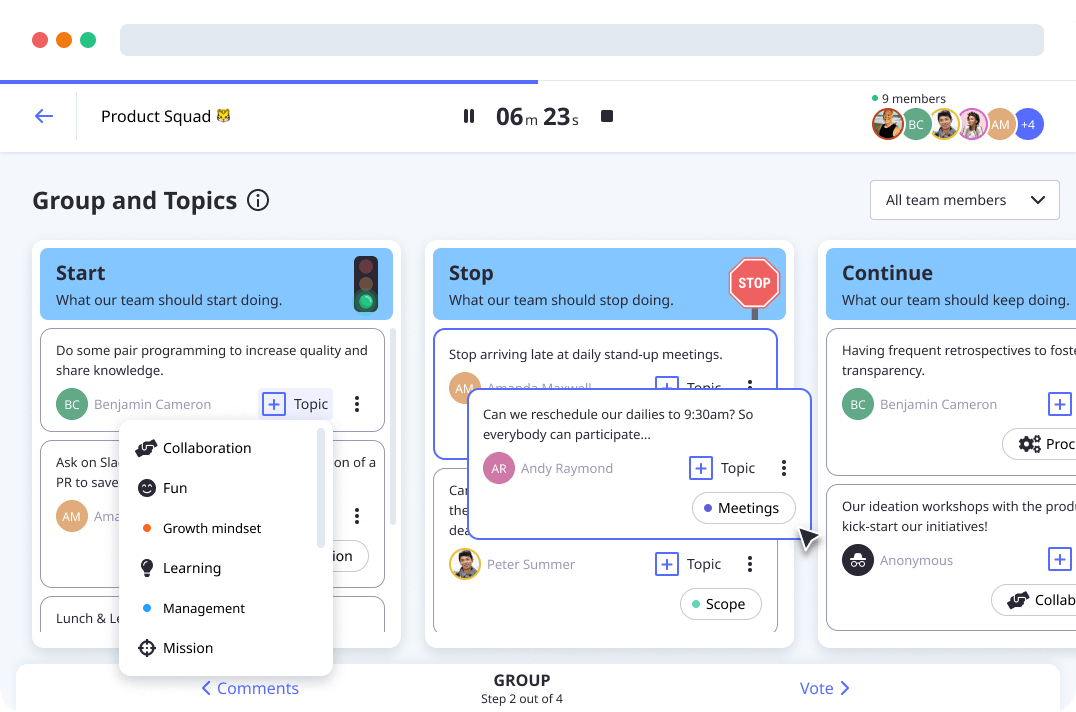
Your retrospective board is now full of ideas. Now, you might want to organize this content a bit.
Regroup similar comments so that it becomes easier to read the core topics emerging from all the ideas.
Then, each person presents their ideas and discusses them with the team.
Neatro allows you to associate themes with each idea, making it even easier to read your retrospective board.
Prioritize ideas
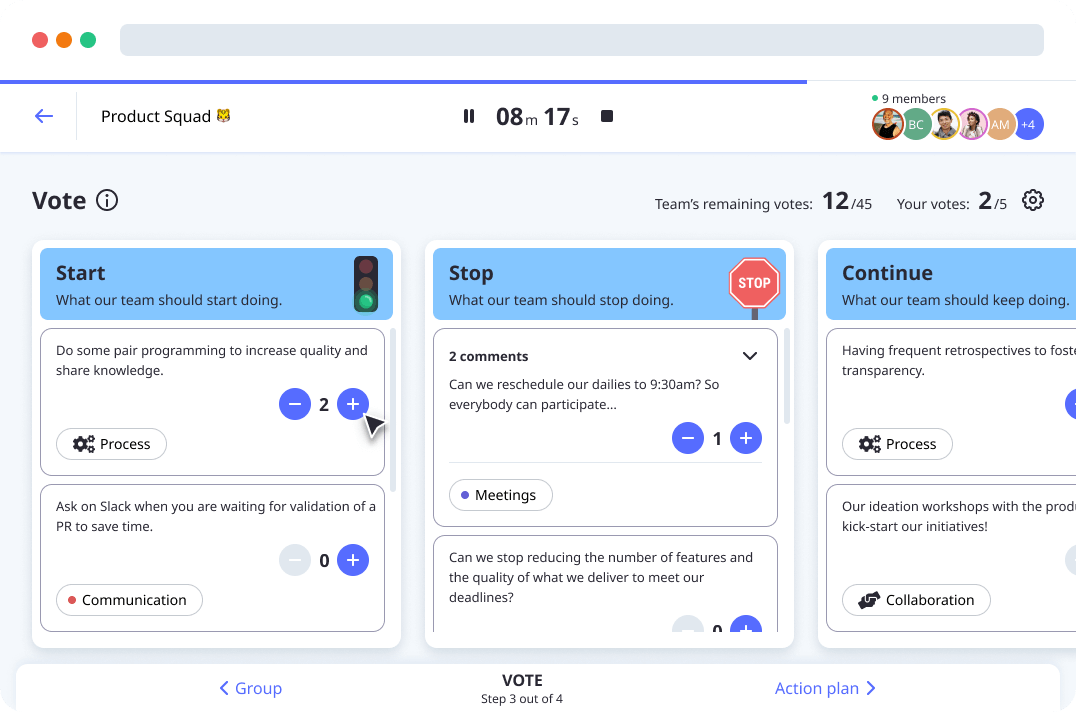
Team members can now vote on the ideas they believe to be priorities.
In this step, I recommend using the dot-voting technique. Each team member has a defined number of votes and can use them on different comments.
Neatro automatically hides votes during this step, so people don't influence each other.
Build an action plan

It is now possible to sort ideas by number of votes. Start with the idea that received the most votes. As a team, think about solutions to solve the related problem.
Once the team has agreed on a solution, add it to your action plan.
I advise you to use a framework like SMART goals to increase the chances your solutions work.
Neatro lets you automatically sort and filter ideas for your team to focus on.
Evaluate the retrospective

Not only your team needs to improve continuously. Your retrospectives need it too!
At the end of the retro, collect your team's feedback with a short survey: the ROTI. First, each member rates the retrospective's Return On Time Invested from 1 to 5. Then, people share suggestions on how the team could tackle retrospectives in an even more efficient way.
Neatro allows you to collect feedback during the ROTI and generate a retrospective report.
Team retrospective or project post-mortem… in the end, does the name really matter? The important thing is to take the time to identify what worked well, what didn’t work and to seize opportunities to improve as a team.
With simple questions like those in the Start Stop Continue retrospective template, you can collect feedback from your team and learn together.
These learnings will help your team deliver more value to your customers.
So you'll know what to do at the end of your next project, Sprint or incident. Invite your team to a retrospective or a post-mortem meeting! ;)



